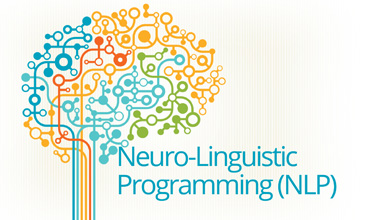Neuro Linguistic Programming Psychotherapy for Improving Emotional State: A Pilot Study

Abstract:
This pilot study was conducted for
assessing efficacy of Neuro Linguistic Programming Psychotherapy in improving
emotional state. NLP psychotherapy techniques used were timeline, anchoring,
double dissociation, perceptual positions, reframing, metaphors, strategy
change and values elicitation. NLP Psychotherapy session(s) were given to ten
participants (N=10) six females and four males. Methods for data collection
included personal interviews, participant's experiential report, DASS
(Depression Anxiety Stress Scale) and NLP wheel of life scale. Assessment of emotional
state change was done on Pre and post therapy scores of DASS (Depression
Anxiety Stress Scale) and NLP wheel of life scale along with changes in
experiential report of participants before and after therapy session(s).
Results obtained by t-tests performed on DASS scores found statistically
significant (p<0.001) improvement for all three categories of emotional
state i.e. stress, anxiety and depression. Improvement on wheel of life scale
score and subjective experience of participants was also reported suggesting
that NLP Psychotherapy could improve emotional state in fewer sessions. This
pilot study shows positive outcome and also adds to the sporadic literature of
NLP psychotherapy as an evidence based study supported by significant
statistical findings, subjective experiential improvement in emotional state of
participants with up to six months follow up noting stability of resourceful
changes attained.
References:
[1.] Ashby, W.
(1965) An Introduction to Cybernetics. Methuen: London.
[2.] Ashok, S.
and Santhakumar, A. R. (2002) NLP to promote TQM for effective implementation
of ISO 9000. Managerial Auditing Journal, 17(5): 261-5.
[3.] Bandler,
R. (1985) Using your Brain for a Change. Moab, Utah: Real People Press.
[4.] Bandler,
R. and Grinder, J. (1975b) Patterns of the Hypnotic Techniques of Milton H.
Erickson, M.D. Vol 1. Cupertino, California: Meta Publications.
[5.] Bandler,
R. and Grinder, J. (1979) Frogs into Princes: Neuro-linguistic Programming.
Moab, Utah: Real People Press.
[6.] Bandler,
R. and MacDonald, W. (1988) An Insider’s Guide to Sub-Modalities. Cupertino,
California: Meta Publications.
[7.] Barnett,
E. A. (1990) The contribution and influence of neurolinguistic programming on
analytical hypnotherapy. Australian Journal of Clinical Hypnotherapy and Hypnosis
11(1): 1-14.
[8.] Bateson,
G. (1972) Steps to an Ecology of Mind. London: Paladin/Granada.
[9.] Bolstad,
R. (2002) Resolve: A new model of therapy. Crown House Publishing Ltd.
[10.] Craft,
A. (2001) Neuro-linguistic Programming and learning theory. The Curriculum
Journal 12(1): 125-36. NLP
[11.] Field,
E. S. (1990) Neurolinguistic programming as an adjunct to other
psychotherapeutic/hypnotherapeutic interventions. American Journal of Clinical
Hypnosis 32(3): 174-82.
[12.] Georges
D.P. (1996) Improved employee selection and staffing through meta programmes.
Career Development International 1(5): 5-9.
[13.] Geronilla,
L. (1989) Neuro-linguistic programming compared to reality therapy. Journal of
Reality Therapy 9(1): 13-19.
[14.] Gray R
M, Liotta R F: PTSD: Extinction, Reconsolidation, and the Visual-Kinesthetic
Dissociation Protocol. Traumatology 18(2) - SAGE journals: 3–16, 2012.
[15.] Grinder,
J. and Elgin, S. (1973) A Guide to Transformational Grammar. New York: Holt,
[16.] Grinder,
J., DeLozier, J. and Bandler, R. (1977) Patterns of the Hypnotic Techniques of
Milton H. Erickson, M.D. Vol II. Capitola, California: Meta Publications.
[17.] Jupp, J.
J. (1989) Neurolinguistic programming: an experimental test of the effectiveness
of "leading" in hypnotic inductions. British Journal of Experimental
and Clinical Hypnosis 6(2): 91-7.
[18.] Lee, A.
(1993) Outdoor education and Neuro-linguistic Programming. Journal of Adventure
Education and Outdoor Leadership 10(4):16-17.
[19.] McWhirter,
J. (1992) Sensory Systems Training Manual. Glasgow: Sensory Systems. NLP
[20.] Perls,
F. (1969) Gestalt Therapy Verbatim. Moab, Utah: Real People Press.
[21.] Rogers,
C.R. (1961) On Becoming a Person. London: Constable.
[22.] Sandhu,
D. S. (1994) Suggestopedia and Neurolinguistic Programming: introduction to
whole brain teaching and psychotherapy. Journal of Accelerative Learning and
Teaching 19(3): 241-56.
[23.] Stanton,
H. E. (1994) Suggestology and NLP: are there similarities?. Journal of Accelerative
Learning and Teaching 19(3): 241-56.
[24.] Tabrizi
F, Shafiabadi A, Zahrakar K. (2015) Investigation the effectiveness of
assertiveness training using neuro-linguistic strategies (NLP) to reduce anger
among married women. New York Science Journal 2015;8(1):64-72.
[25.] Thompson
J.E., Courtney, L. and Dickson, D. (2002) The effect of neurolinguistic
programming on organizational and individual performance: a case study. Journal
of European Industrial Training 26(6): 292-8.
[26.] Tosey P.
and Mathison J. (2003) Neuro-linguistic programming and learning theory: a
response. The curriculum Journal Vol. 14 No. 3 Autumn 2003 pp 371- 388
[27.] Trickey,
K. V. (1997) How information gathering works for the librarian or the personal
development coach. Journal of Managerial Psychology 12(5): 352-6.
[28.] Wake L,
Leighton M: Pilot study using Neurolinguistic Programming (NLP) in post-combat
PTSD Mental Health Review Journal 19(4): 251-264, 2014.
[29.] Watzlawick,
P., Beavin, J.H. and Jackson, D.D. (1967) Pragmatics of Human Communication.
New York: Norton.

